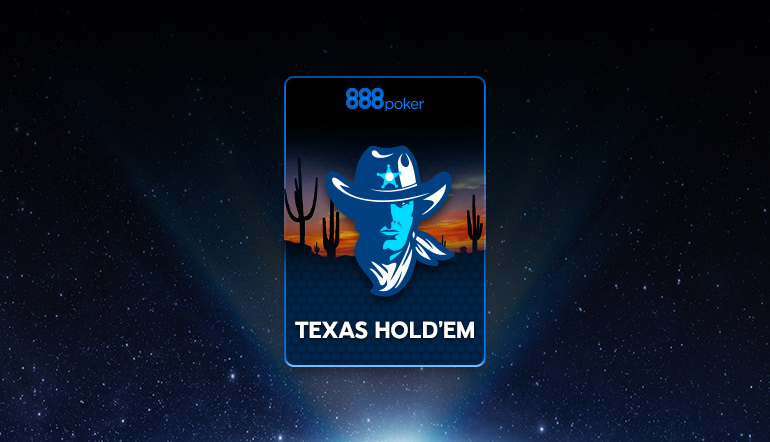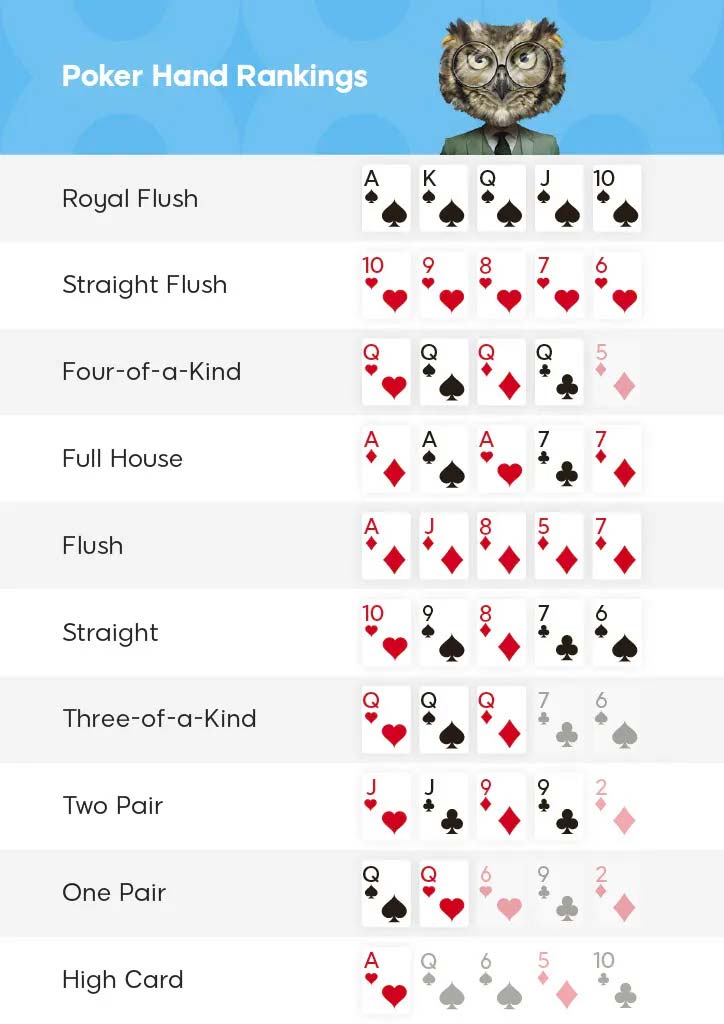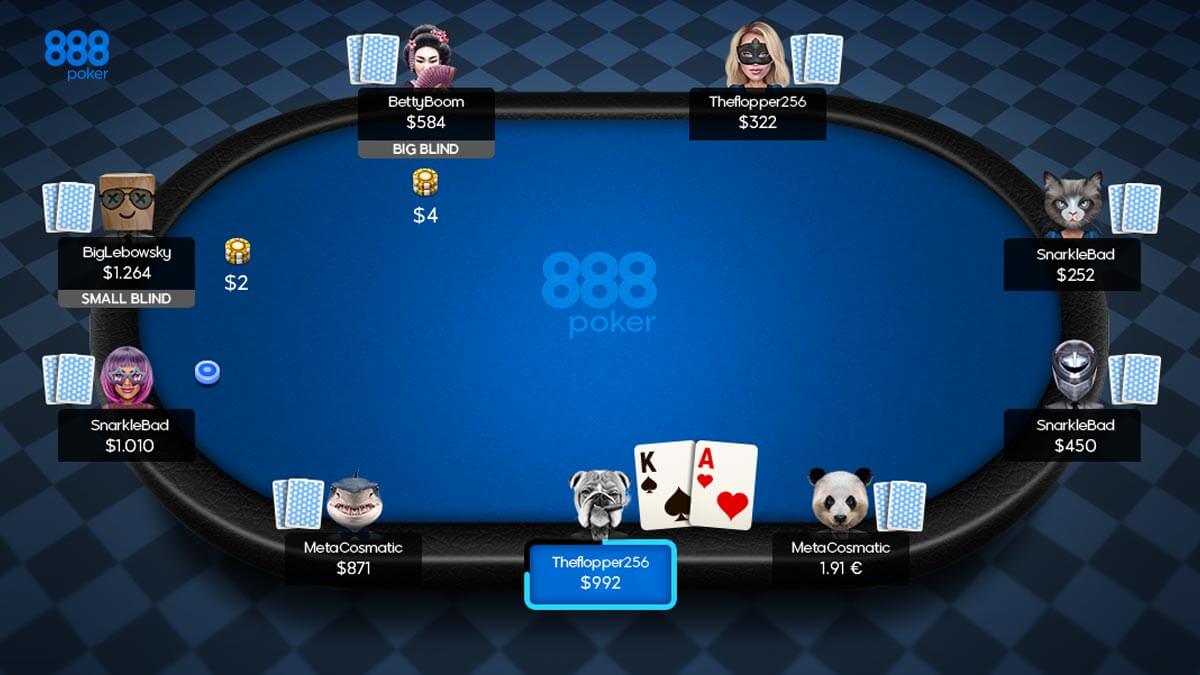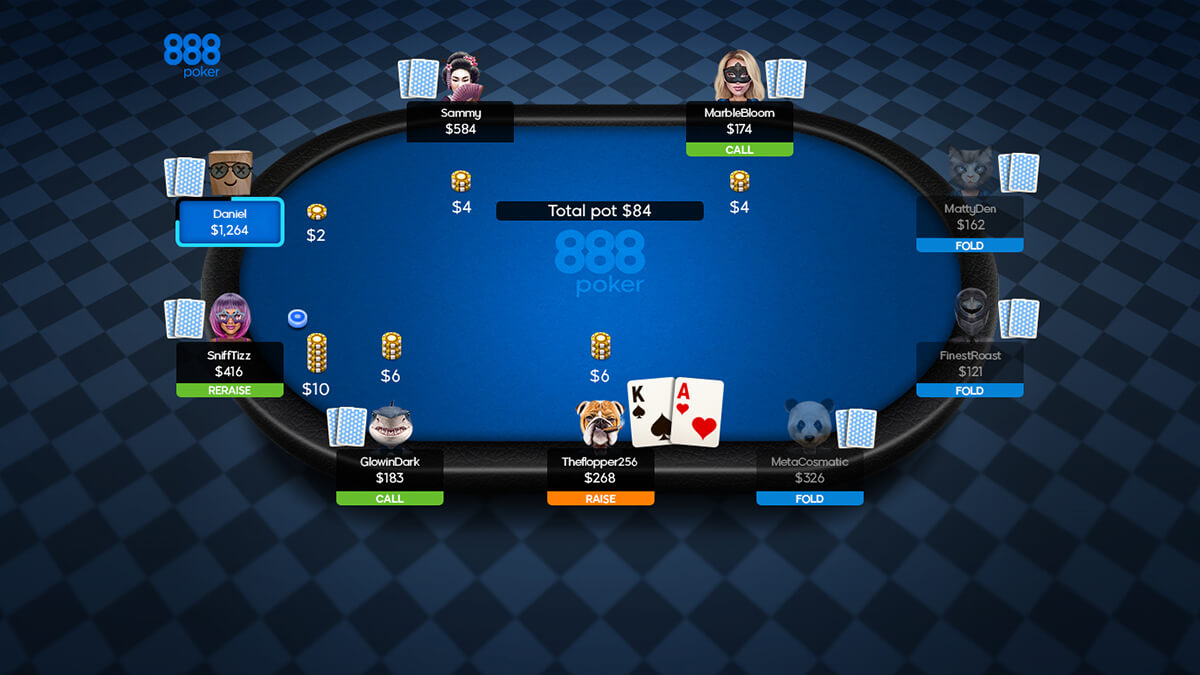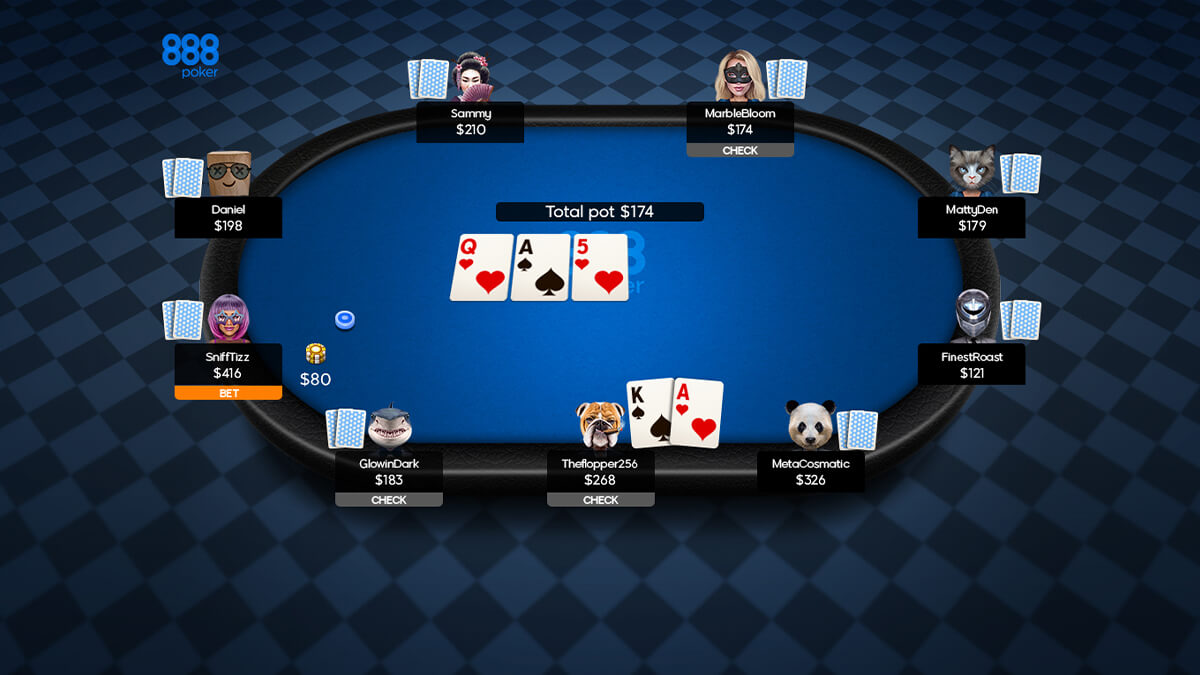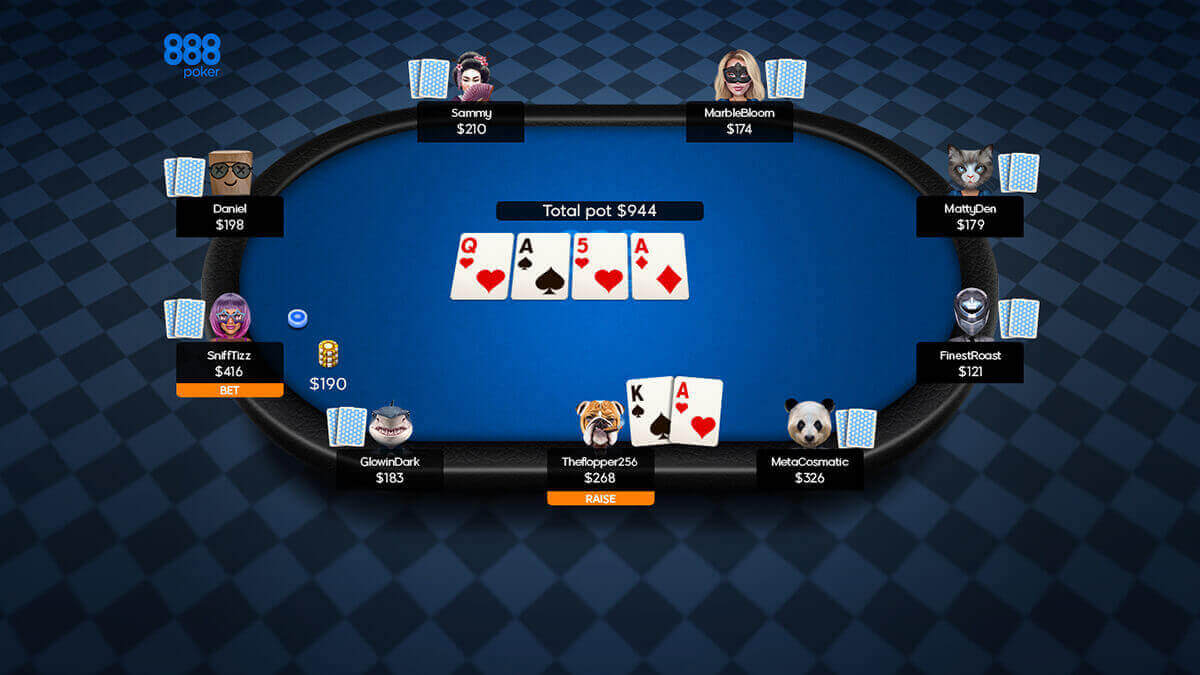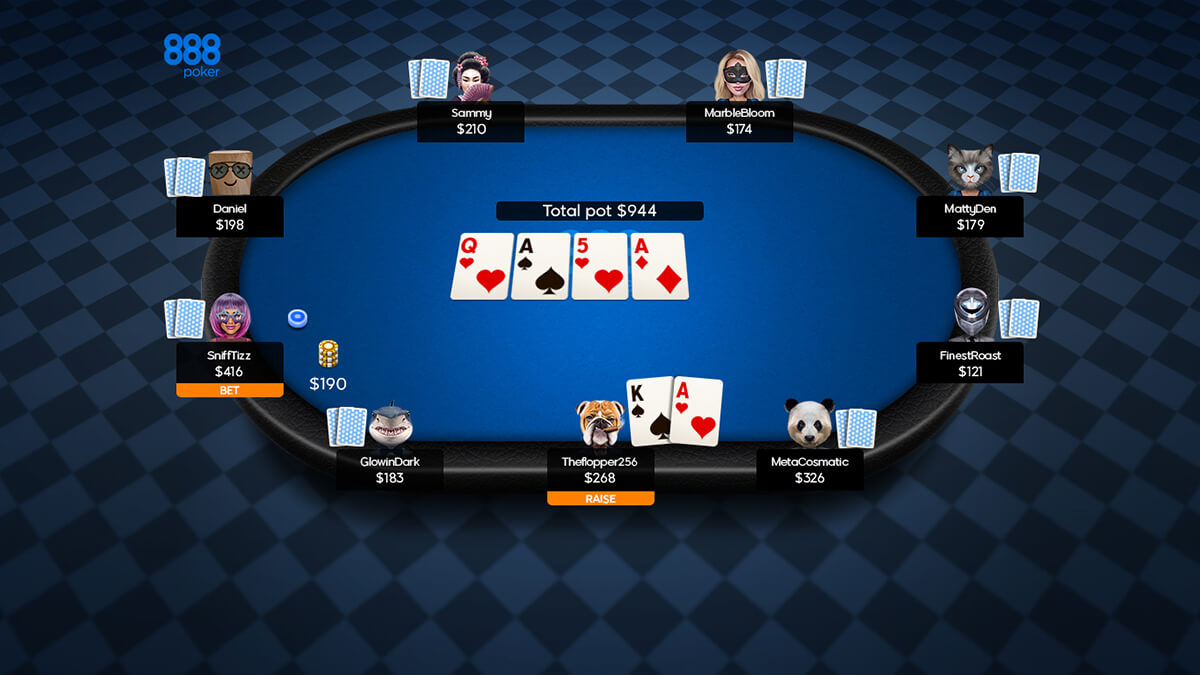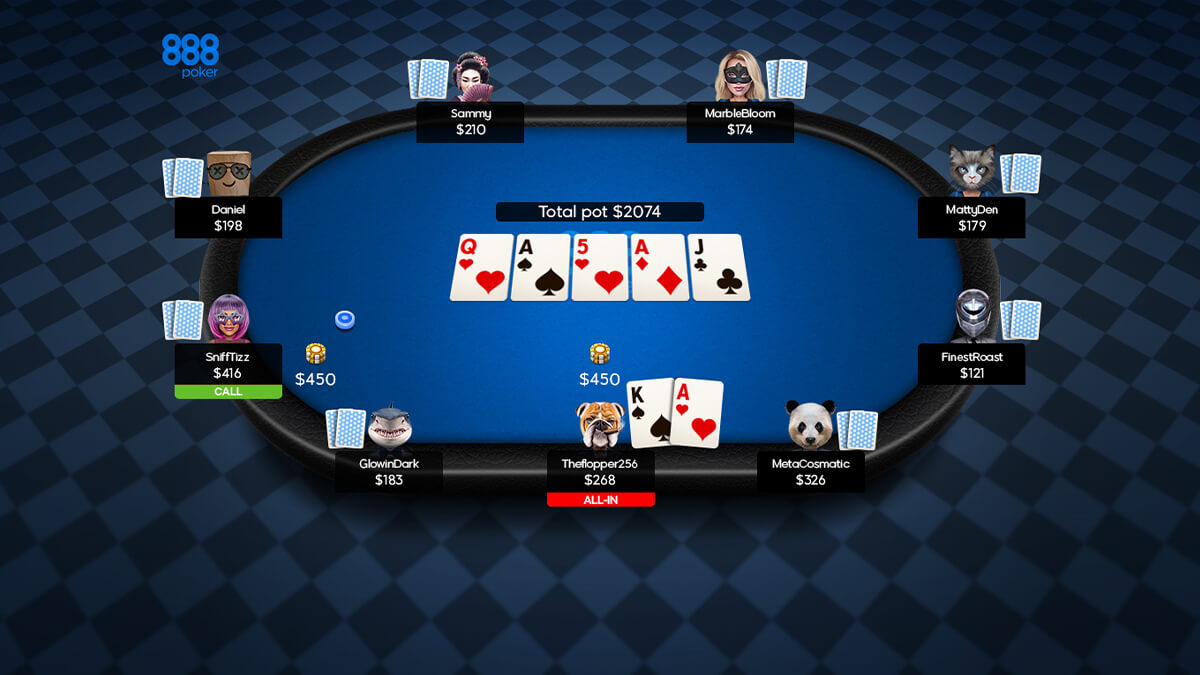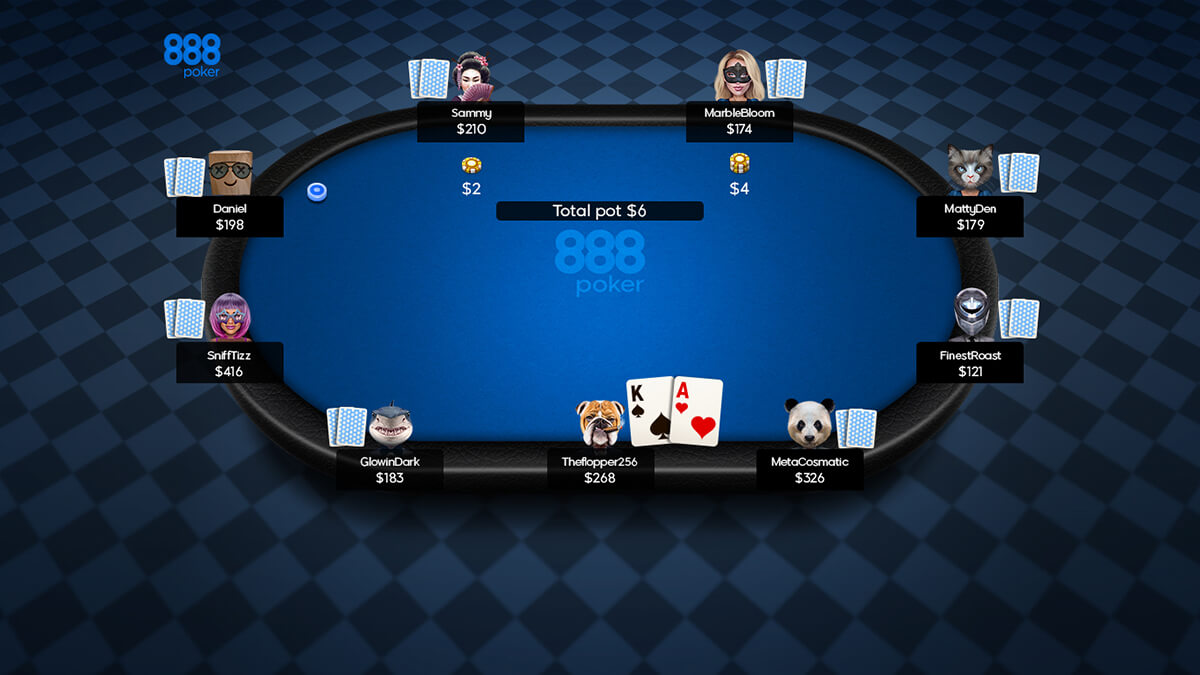Hands in Hold’em are made with a combination of our hole cards and the community cards. While every player shares the community cards, the hole cards are different.
Players can create hands of different strengths using their own hole cards.
We have seven available cards to make a 5-card hand by the river in Hold’em - (2 hole cards + 5 community cards).
Players may use any combination of hole cards and community cards. So, it’s possible to use both hole cards, one, or even none when constructing a 5-card hand.
Check out the hand rankings guide to learn what beats what.
But here is the quick breakdown, from worst to best.
- High Card
- One Pair
- Two Pair
- Three of a Kind
- Straight
- Flush
- Full House
- Four of a Kind
- Straight Flush
- Royal Flush
Here are a couple of examples to see how reading hole cards in connection with the community cards works.
Hand Example 1
Hole Cards: As5s
Board: KsTs5d4h3s
Hand -> Ace-high Flush. We use our two hole cards and three from the board to make the following 5-card hand:
As Ks Ts 5s 3s
Hand Example 2
Hole Cards: Ac5d
Board: AsTh4c4s2d
Hand -> Two pair, Aces and Fours with Ten Kicker. This time we just used one of our hole cards and four from the board to make the following 5-card hand:
As Ac 4c 4s Th
Hand Example 3
Hole Cards: 2s2s
Board: ThJcQsKsAd
Hand -> Straight, Ace-high. Notice that our hole cards are irrelevant her. We use the five community cards to make a straight. Our opponents also have access to the same community cards. So, they will also have the same straight.
We are guaranteed to chop (split the pot due to a tie) with any remaining players.
